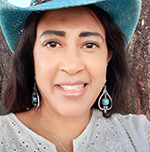By Barrett Holman Leak

![]() LA JOLLA, California — The selections at the San Diego International Jewish Film Festival have been, as usual, outstanding and diverse. Occurring partially in Black History Month, it is fitting that it includes a film about the alliance between African Americans and Jewish Americans, fighting against White supremacy. The film Ain’t No Back to a Merry-Go-Round (taken from a Langston Hughes poem of the same title) is one such film in the festival this year. This documentary by Emmy Award-winning director Ilana Trachtman is powerful and inspiring.
LA JOLLA, California — The selections at the San Diego International Jewish Film Festival have been, as usual, outstanding and diverse. Occurring partially in Black History Month, it is fitting that it includes a film about the alliance between African Americans and Jewish Americans, fighting against White supremacy. The film Ain’t No Back to a Merry-Go-Round (taken from a Langston Hughes poem of the same title) is one such film in the festival this year. This documentary by Emmy Award-winning director Ilana Trachtman is powerful and inspiring.
The plot centers around an incident that occurred in a suburb of Washington, DC. Using an integration of newly discovered archival news footage narrated by the inimitable Mandy Patinkin, we learn how Blacks and Jews successfully fought alongside each other for civil rights and against segregation. For almost 60 years, Glen Echo Amusement Park was the wholesome, beloved playground of White metropolitan Washington, DC. Every summer, tens of thousands enjoyed its Crystal Pool, wooden rollercoaster, Spanish Ballroom, Tunnel of Love and Carousel. However, the African American children living nearby could only watch all the fun from a distance, along the nearby roadway.
In June of 1960, three shocking, unprecedented events happened at “heavenly” Glen Echo Amusement Park:
- Howard University students arrived up at the amusement park and sat down on the carousel.
- White, middle-aged neighbors, largely Jewish, joined the protests.
- The American Nazi Party showed up.
Along the way, we learn from present-day interviews with three Jewish civil rights demonstrators that the racially segregated amusement park was actually owned by two Jewish brothers who resisted integrating it. We learn of the persistent and powerful resilience of the Howard University students. We learn how local Jewish residents and area college students put their bodies on the frontlines, facing off against police with well-organized persistent marching and sitting down at segregated lunch counters, alongside Black Howard University students.
Both Jews and Blacks went to prison because of the Echo Park protesting. The Black students were especially oppressed — arrested as harassment for what we now call DWB or “driving while Black.” One of the Jewish protestors recalls that when she looked out of her prison cell, the guard towers reminded her of Auschwitz.
The film reveals that this group of six Black and Jewish civil rights demonstrators not only protested in Glen Echo, but also were part of the Freedom Rides that registered Southern Black voters and helped integrate the Woolworth lunch counters.
The film documented the entrance of the American Nazi Party and the fear it struck in the hearts of the Glen Echo Jews who only a few years before had escaped The Holocaust. With unwavering steadiness, the film records the terror they felt and their fierce determination to continue protesting alongside African American demonstrators in the face of racism.
Not one of the protestors, African American nor Jewish American, expressed regret over fighting. As one Howard University student, Dion Diamond, now tells his grandchildren to stand up and stand against any act or word of antisemitism they encounter because, in his words, they must never forget the alliance between Jews and African Americans and that the Jewish American community is the African American community’s greatest friend.
As someone working to build bridges between these two communities in a time fraught with antisemitism and racism and a struggle to reunite, the film gives me hope.
*
Barrett Holman Leak is a freelance writer based in San Diego.